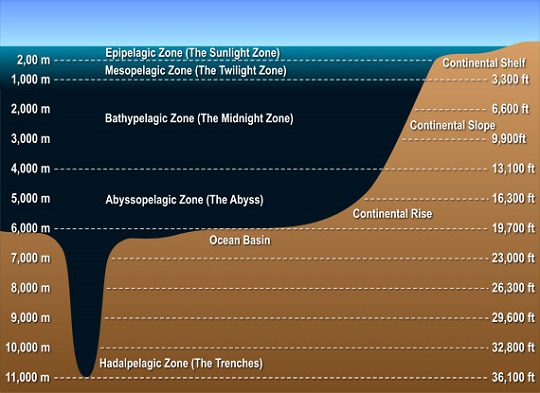Ocean Currents
Tilt-A-Whirl rides at amusement parks spin in circles while swinging up and down at the same time. These movements slosh water (and other fluids) around really well, which you may have learned from getting sick after riding one. Ocean currents are kind of like a Tilt-A-Whirl. They move ocean water around the planet and up to the surface then down to the ocean floor. This dizzying water ride is made up of two systems: surface currents and deep ocean currents.
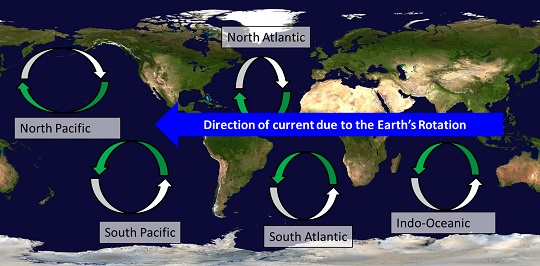
The first type of ocean current happens at the surface of the water. The spinning of the Earth and the trade winds causes these surface currents. At the equator, winds tend to blow toward the west, and close to the poles winds tend to blow toward the east. These winds move across the surface of the ocean, pulling the water along with it.
But when land gets in the way of these currents, they have to change course. In the Northern Hemisphere, the water turns to the right, and in the Southern Hemisphere it turns to the left. These currents form giant loop-de-loops, or gyres, spinning the ocean’s water around in circles.
Surface currents form 5 major ocean gyres between the continents. These gyres are named for the ocean basins, or sections of the ocean, that they form in: two each in the Pacific and Atlantic Oceans (one north and one south), and one in the Indian Ocean.
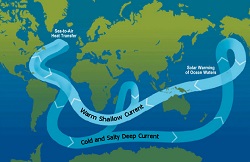
The second type of ocean current moves water from the top of the ocean to the bottom. These currents move much slower compared to surface currents, and instead of starting at the equator they start at the poles. If you drop an ice cube into a very still glass of juice, you can watch from the side as the cold water near the ice grows heavy and sinks to the bottom of the glass.
The same thing happens in the ocean near the poles – cold water near sea ice becomes heavier and starts to drop to the bottom of the ocean. As this dense water sinks, it allows more water to move in, cool, and sink to the bottom behind it. When cold water plunges to the ocean floor, it starts a giant slow motion current along the bottom of the ocean.
Unlike the fast, isolated surface gyres, this deep ocean current travels all over the planet into every ocean basin. Eventually this cold water warms and is pushed to the surface where it starts the cycle again. Following this deep ocean current would be like riding a roller coaster that takes a thousand years from start to finish.
Two Worlds, One Biome
This roller coaster-like global conveyor belt connects the top and bottom of the ocean, which can be like two completely different worlds. Instead of thinking about the open ocean biome horizontally (from left to right), many scientists characterize this biome vertically (from top to bottom). This is because the open ocean is incredibly deep – over 2 miles deep in some areas. The environment changes quickly as you dive deeper and deeper into the open ocean.
The top section of the open ocean only goes down as far as you can see. This isn’t because the water is too murky, but because deeper down there is no light. Most sunlight can only reach down to about 500 ft (200 m), and all light disappears below 3,280 ft (1,000 m). Unlike in deeper water, in this zone (the epipelagic zone), algae can use sunlight to grow and animals can use their eyes to hunt.
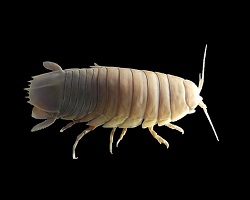
Light isn’t the only factor that changes as you dive into the deep ocean. The further down you go, the saltier it gets. As you dive down, there is also less oxygen, the temperature drops, and water pressure increases, making life very hard.
If you tried to dive this far under the ocean, you would be crushed, so it’s hard to believe that any animals can survive this far down.
But many animals survive in this eternal darkness, along with fierce-looking fish specially adapted to this harsh environment, including some sharks.
This area is called the aphotic (or no-light) zone. Every night some of these fish and some invertebrates swim up into the more productive epipelagic zone where there is more food.
Additional images via Wikimedia Commons.
Read more about: Observing the Open Ocean
Bibliographic details:
- Article: Anatomy of the Open Ocean
- Author(s): Dr. Biology
- Publisher: Arizona State University School of Life Sciences Ask A Biologist
- Site name: ASU - Ask A Biologist
- Date published:
- Date accessed:
- Link: https://askabiologist.asu.edu/anatomy-open-ocean
APA Style
Dr. Biology. (). Anatomy of the Open Ocean. ASU - Ask A Biologist. Retrieved from https://askabiologist.asu.edu/anatomy-open-ocean
Chicago Manual of Style
Dr. Biology. "Anatomy of the Open Ocean". ASU - Ask A Biologist. . https://askabiologist.asu.edu/anatomy-open-ocean
Dr. Biology. "Anatomy of the Open Ocean". ASU - Ask A Biologist. . ASU - Ask A Biologist, Web. https://askabiologist.asu.edu/anatomy-open-ocean
MLA 2017 Style
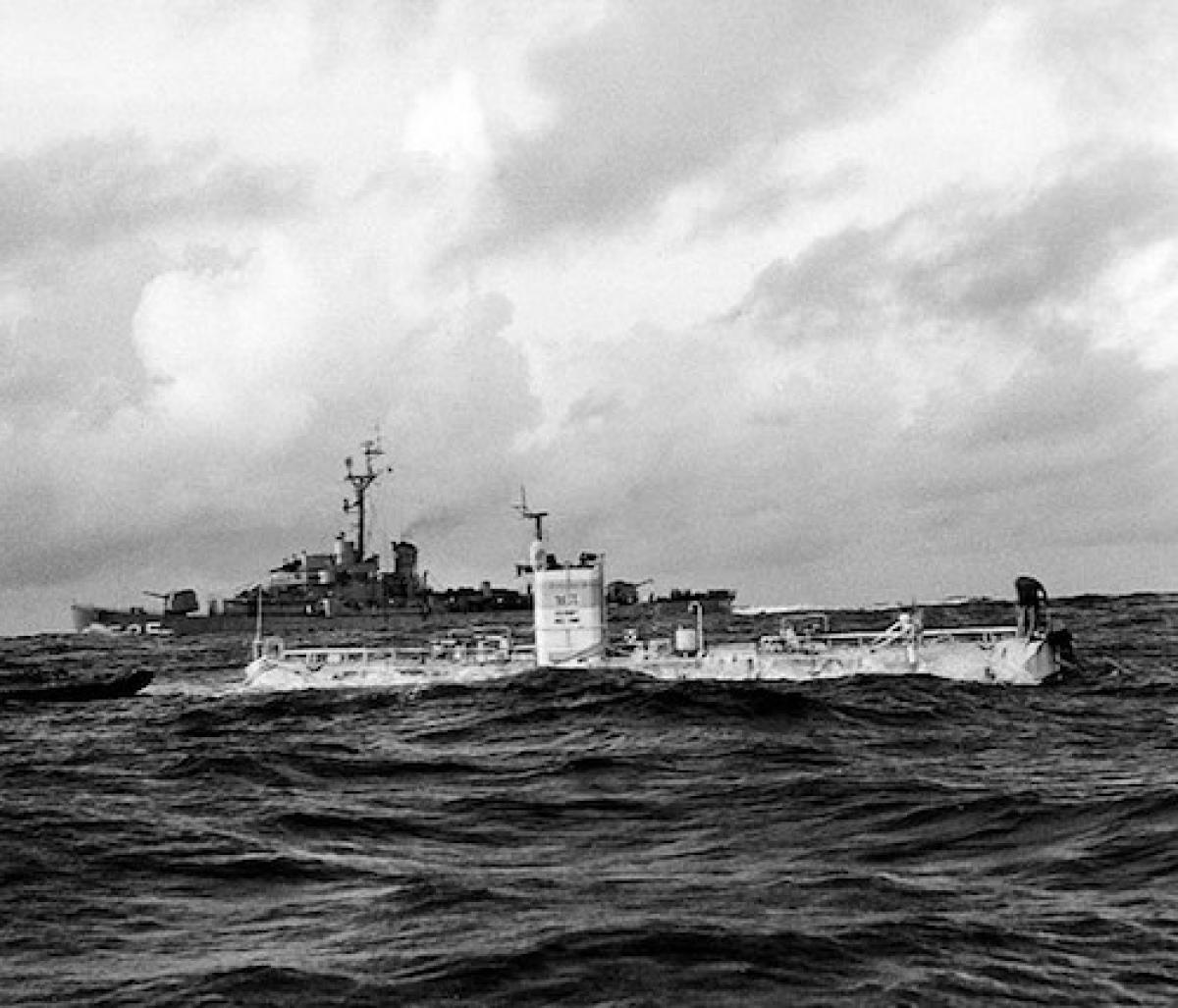
The vessel shown in front here, the Trieste, was the first vehicle to make it to the deepest part of the ocean, the Challenger Deep in the Mariana Trench.
Be Part of
Ask A Biologist
By volunteering, or simply sending us feedback on the site. Scientists, teachers, writers, illustrators, and translators are all important to the program. If you are interested in helping with the website we have a Volunteers page to get the process started.


